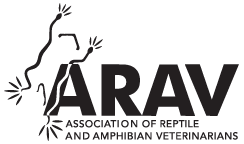Shell Erosive Disease, a Review
The chelonian shell, a unique anatomic characteristic, can develop lesions secondary to a variety of pathogens. Herein is a review of chelonian shell anatomy and scute growth followed by diagnostics, treatments, and prognosis of bacterial, viral, fungal, and neoplastic shell lesions affecting a variety of chelonian species.Abstract

Plastron of a painted turtle (Chrysemys picta). There is a large region of ulceration of the shell keratin and epithelial layers with exposure of the underlying bone. There are also multiple smaller ulcerations over the plastron. Case courtesy of the Washington Department of Fish and Wildlife and the University of Illinois Zoological Pathology Program.

Histologic section of the carapace of a red-eared slider (Trachemys scripta elegans). There is ulceration of the shell epithelium and exposed bone is overlain by cellular debris. Bone lacks osteocytes within lacunae (necrotic). Deeper within the bone is an area of inflammation and hemorrhage. Normal remnant bone is on the left side of the image. Ulceration was associated with a superficial bacterial infection. Image courtesy of the University of Illinois Zoological Pathology Program.

Carapace of a Western pond turtle (Actinemys marmorata). This carapace has a dull, pitted, and irregular surface with areas of pigmentation loss (bleaching). Along some scute margins, the keratin is thickened and margins are raised. Case courtesy of the Washington Department of Fish and Wildlife and the University of Illinois Zoological Pathology Program.

Histologic section of the carapace from the same turtle as in Figure 3. Extending from the surface are multiple epithelial lined cystic structures that disrupt and replace the normal shell bone. Remnant normal bone is present on the left side of the image and has irregular margins with ostoclasts along one margin. Cystic structures contain abundant compact lamellated keratin with fragments of necrotic bone and are surrounded by loose fibrous connective tissue with rare heterophils. Emydomyces testavorans was confirmed within these cysts by histopathology and PCR in this case. Case courtesy of the Washington Department of Fish and Wildlife and the University of Illinois Zoological Pathology Program.
Contributor Notes



